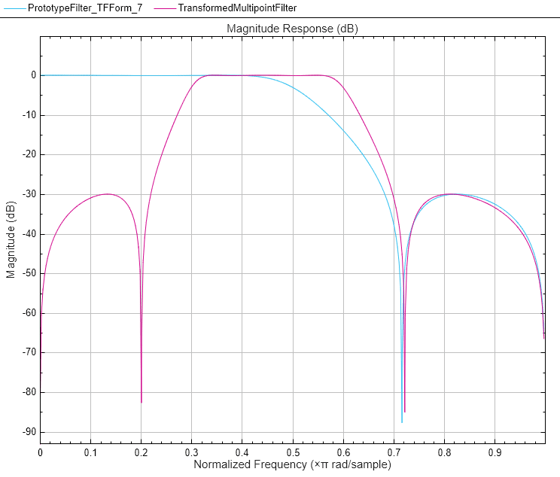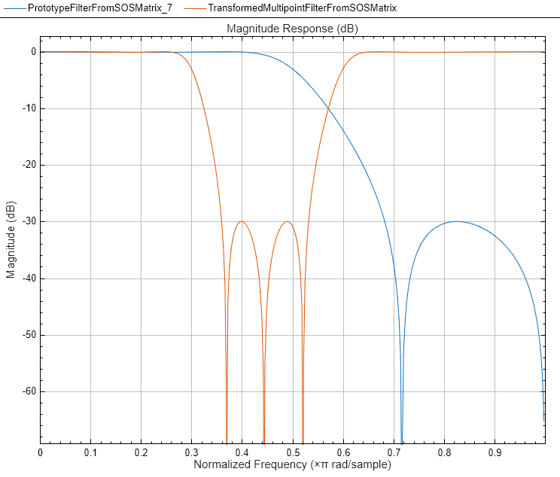iirlp2xn
Transform IIR lowpass filter to IIR real N-point filter
Syntax
Description
[
transforms an IIR lowpass filter to an IIR real N-point
filter.num,den,allpassNum,allpassDen] =
iirlp2xn(b,a,wo,wt)
The iirlp2xn function returns the numerator and denominator
coefficients of the transformed IIR N-point filter. The function
also returns the numerator, allpassNum, and the denominator,
allpassDen, of the
Nth order allpass mapping filter.
The prototype lowpass filter is specified with the numerator b
and the denominator a.
The function transforms a real lowpass prototype filter to an
N-point filter by applying an
Nth-order real lowpass to real
multipoint frequency transformation, where N is the number of
features being mapped and is given by the length of the vector
wo. By default, the DC feature is kept at its original
location. For more details, see IIR Lowpass to IIR Real N-Point Filter Transformation.
[
allows you to specify an additional parameter, num,den,allpassNum,allpassDen] =
iirlp2xn(b,a,wo,wt,pass)pass as
'pass' or 'stop', which chooses between
using the “Nyquist Mobility” and the
“DC Mobility”, respectively. In the case of
“Nyquist Mobility”, the DC feature is kept at
an original frequency and the Nyquist feature is free to move. In the case of
“DC Mobility”, the Nyquist feature stays at
its original location and the DC feature is free to move.
Frequencies must be normalized to be between 0 and 1, with 1 corresponding to half the sample rate.
Examples
Input Arguments
Output Arguments
More About
References
[1] Krukowski, A., G.D. Cain, and I. Kale. “Custom Designed High-Order Frequency Transformations for IIR Filters.” In 38th Midwest Symposium on Circuits and Systems. Proceedings, 1:588–91. Rio de Janeiro, Brazil: IEEE, 1996.
[2] Cain, G.D., A. Krukowski and I. Kale, “High Order Transformations for Flexible IIR Filter Design,” VII European Signal Processing Conference (EUSIPCO'94), vol. 3, pp. 1582-1585, Edinburgh, United Kingdom, September 1994.
Version History
Introduced in R2011a


